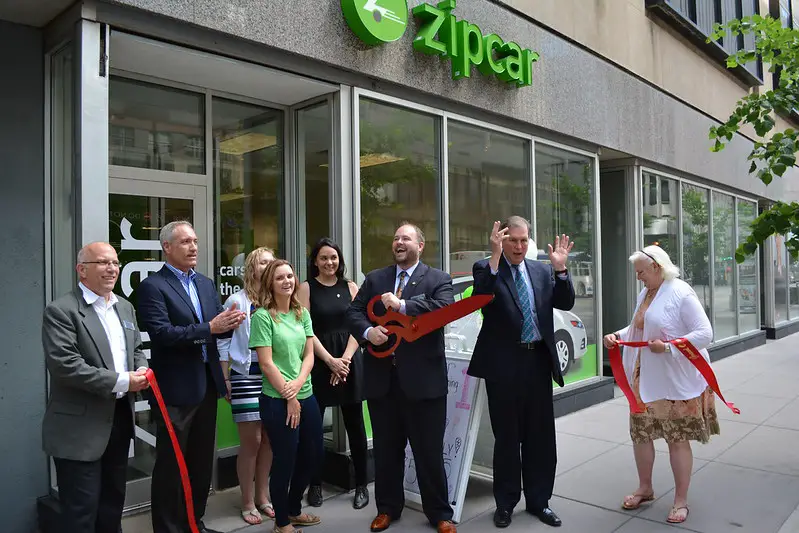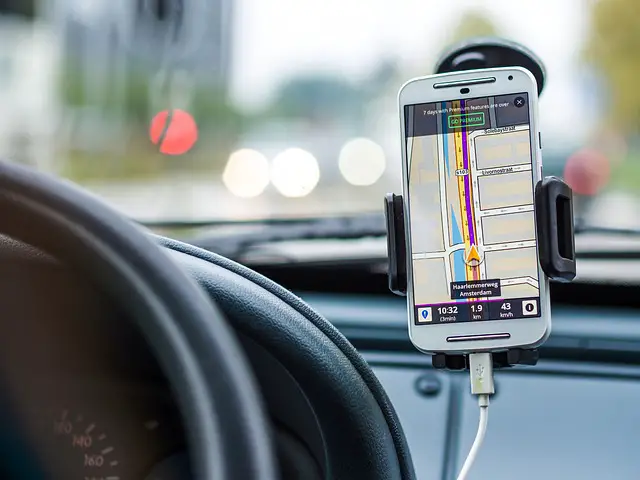Do you wish to change your great idea into a successful business? Or do you already own business; however, wish to improve it according to the tastes of your customers? Well, then it’s high time to grow a business model.
A great business model is important for any type of business. It depends on who your customers are, the type of market you work in, who your associates are, the money you have, where you get your incomes from, in which activities you take part in and, finally, how you make and deliver value to your customers.
You’ll learn about the fundamentals of creating a business model in these chapters. You’ll learn about the type of questions you have to tackle when you form a new business and how to relate with your customers to create innovative ideas.

1 – A business model begins with your groups of customers, value propositions, and market means.
Nowadays, there’s a business for almost everything: Nestlé snacks, Nike wear, the brand of underwear you are putting on presently. Even though these businesses look really different, they all have a thing in common which is they make and deliver value for customers.
It begins with a business model that outlines a market of customers for whom a product produces value. Customers are the focus of any type of good business model – nevertheless, a business can’t function without them.
There are two key types: mass market and niche market.
A mass-market method, businesses that provide to a huge group market of customers with the same requirements – for instance, needs for paper napkins or milk. While a niche market method is where a business provides to a smaller group of customers with particular interests, for instance, a vintage record store.
What’s next, after knowing the type of market your business falls under? You have to determine your value proposition. This defines the issue that your product fixes, or, that is to say, the need it achieves for your customer. Also, your value proposition needs to show the reason why your product is worth picking over other products.

The value of your product can stem from one of the numerous factors. The fabulous design might fill your product with an aesthetic charm that defeats the competition –consider Apple products, for instance. Or customers might be attracted to the risk reduction that your product provides, which is frequently the situation with IT services. Or maybe your product’s performance has the entire charm, like a computer that’s quicker and very powerful, for example, provides substantial value to customers.
After identifying your market as well as your value proposition, your business model requires a plan of the means that you’ll use to get to and interact with your customers. There is a lot of choices. You can create your own means, for instance, a storefront, a website or a sales team. Or you can make means through business partners, for instance, a shop that stocks your product, or a wholesaler.
Now that we know the first three features of the business model, let’s go to the next three.
2 – Business models include customer relationships, revenue streams, and vital resources as well.
When getting across to your customers, there’s more to think of than only the means you make use of. The quality and style of your outreach are really essential as well. This is the reason why your business model needs to consider customer relationships.
The relationships you create with your customers is important, as it’ll decide how they view the value of your company. Will you provide your communication with clients with a personalized touch? Or will you automate your entire emails? Or you could combine both. For instance, let’s say you’re an IT company. Customers with a specific issue might require personal help, while regular customers could get automated emails with upcoming deals.
Another choice is Self-service which is a method incorporated by Ikea. Other companies even utilize a co-creation model, whereby they make value by combining forces with their customers. Consider Amazon, where customers write book reviews, making value for the other customers selling books online.
After creating an approach to fix customer relationships, your business models require a revenue stream. If your customers are the heart of your business, revenue streams are the veins and arteries that make things functioning. There are three methods to form revenue namely transaction revenues, recurring revenues and usage fees.
Transaction revenues derive from one-time payments; for instance when you pay for a newspaper. Recurring revenues occur from repeating payments, for instance, monthly subscriptions we pay to make use of services such as Spotify or Netflix. Lastly, there are usage fees, which vary depending on how a customer essentially uses your service. For example, the more data you make use of on your phone, the more your usage fee.

Aside from customer relationships and revenue streams, your business model needs to also have in mind how your company will access the resources it requires. Consider these resources as the supplements that’ll assist your company to grow and flourish. There are three types of resources you’ll require to have access to and those resources are physical resources, human resources, and intellectual resources.
Physical resources comprise the materials, equipment or buildings you’ll require to manage your business. Small boutiques need a shopfront and cash registers, while consumer giants such as Walmart and Ikea include huge warehouses to their physical resources.
Staff are your human resources, those are people you’ve chosen due to the skills, experience, and qualities they possess that’ll make your business flourish. For instance, advertising agencies, depending on the creative people in their staff. Lastly, intellectual resources contain copyrights and patents – things that companies such as Microsoft and IBM depend on.
3 – Important activities, partnerships, and cost structure are important features of a business model.
Just as we have to eat, breathe and sleep to live, your business has to do a set of important activities to prosper. These important activities can be measured in terms of three wide groups namely production, problem-solving and network and platform hosting.
Producing a smartphone or cooking a pizza are samples of production activities. Consultancy is a sample of a problem-solving activity, whereby ideas and suggestions are formed. Network or platform hosting is the crucial activity of internet companies such as eBay and Airbnb.
Beside important activities, partnerships are another crucial feature of your business model. To manage your business, you’ll have to collaborate with others. Partnerships are important to some of the world’s top brands – Apple associates with Foxconn to make their iPhones, for instance.
Also, a good method to minimize risk is Partnerships. Consider the Blu-Ray data-storage format, for example. A lot of electronics companies decided to create a standard setup together. This gave each company a virtual level of security. If each company had created its own setup, they would have run the danger of being overtaken by the competition and having its setup removed.

A business model needs to also contain a cost structure. A cost structure outlines where and what costs occur in your business. Some businesses are focused on cost while others are value-driven. Cost-driven business models are founded on the belief that costs need to be kept as low as possible. This can be realized by decreasing the amount of service given to your customers by making use of automated systems. A sample of a cost-driven business is EasyJet.
Conversely, Private airlines signify a value-driven business model. This method concentrates a bit on keeping costs low and more on providing customers a high-value product that defends the higher prices.
Now we have looked at the entire important features of the business model. In the next chapters, we’ll look at how you can begin making your own.
4 – Empathize with your customers to find out what they actually want.
Being an entrepreneur is essentially about taking risks and jumping into the unknown. Just like a designer might expect a new style in fashion by making something that has never been done yet, it’s your responsibility to think of something that hasn’t existed yet. This is no small accomplishment; however, there’s one device you can make to get those creative thought flowing – customer insights.
By understanding what exactly your customers value, you can find out niches with unused business potential. Consider EasyJet, for example. They knew that lower-income customers desired to travel by plane. Therefore, they made a business model that used the advantage of the potential in the lower-price part.
Another business that utilized customer visions to discover a new niche is Zipcar. They set themselves in their customers’ shoes and found that there was a vast request for rental cars in metropolitan regions if only they were without the maintenance and insurance fees. Therefore, Zipcar formed an annual membership for its customers, letting them rent cars at an hourly rate.
Therefore, how can you get in the thoughts of your customers’ heads just as EasyJet and Zipcar did? Attempt using the empathy-map technique. Begin by drawing a large X on a flip chart. On top of it, write what your likely customers might reason and feel when they make use of your product. On the right side of the flip chart, write down what they see. On the left side, write down what they hear. At the end of the flip chart, write what they say and do. By doing this, you’ll have drawn out all parts of your customer’s experience.

Now, add this map to your customer personas. This is an imaginary profile of your potential customers illustrating their demographic data, as well as their age, marital status, revenue and level of employment. Having your map and your ideal personas prepared, now you have to ask some important questions on what they think, feel, see, hear, say and do.
What kind of emotions do your customers feel? What are the feelings or thoughts that they don’t share with another person? What do their surroundings look like? What type of people are they surrounded by? What impact do these people have on them? What are the things they hear from their wives, husbands, friends, and coworkers? What do they say to other people? And, lastly, how do they behave in public?
These extensive kinds of questions will let you discover wants and needs that your customers might not even know that they have. And these hidden wishes and needs may end up being the important elements to your business’s success.
5 – Find inspiration for your business by writing out scenarios and using your client as the protagonist.
Just like how a scriptwriter imagines a fascinating story full of complicated characters, you can breathe life into your business model by writing out business scenarios.
There are two key writing methods you can use to make these scenarios. The first approach is identifying direct scenarios that your customers might encounter. Bring out your empathy-map and make use of it as your inspiration to write a short text about each and every of your customer personas, writing down their wants, aspirations, goals, and concerns. These scenarios need to be approximately 300 words each.
What next? Well, let’s assume that you are a telecom operator enthusiastic about taking your GPS technology to the next stage. You might need to form the following scenarios containing your customers as characters: Tourists going to Rome without preparing ahead for their day and needing to depend on direction from their GPS. Or a young entrepreneur managing a small home-delivery service using her GPS to direct purchases to her customers.

With the second method, you form business scenarios by visualizing the world your customers might encounter in the future. For instance, let’s say you’re a tech company; why not just write a scenario on the future of public transport? Think of how the current emerging technology –like big data, AI and the internet of things – will transform the manner we get to our workplace or drop our children off at school in 50 years to come.
Are we still going to require train drivers? Or will intelligent systems come into existence? Will WiFi on underground trains become the custom? What of the new tools that enable us to monitor our children’s paths while they head home from school? While creating these forward-looking business scenarios around your customer personas, you’ll see the inspiration you require to make business models that don’t only fix the issues we face in this present day but are adjustable to fix tomorrow’s problem as well.
Writing business scenarios isn’t just the only method to get inspired. Another good place for inspiration is successful brands. Let’s explore two stand-out business models in the following chapter.
6 – Nowadays, Freemium and open-source models are damaging business.
Assuming you’re staying in London and your brother has recently relocated to Singapore. How will you stay in touch with him? Costly long-distance phone calls? The random email? No. Probabilities are, you will use Skype. Ever thought of the reason why this service, which offers a lot of value, is free?
The creators of Skype simply put themselves in your shoes, understood what you required and wanted, and then made their business model: freemium. The freemium model signifies that customers can make use of a service for free, with the choice to pay for more advanced or comfortable services. Basically, these premium customers bear the fees of free users.
This is the situation at Skype, where a big user base can use the benefit of the basic product for free. Customers who choose to pay more get more value, like the ability to call landlines. The freemium model functions mainly well for web companies; however, could be used in any business providing that the pricing is feasible.
Therefore, how do you ensure that freemium will work for you? Well, you’ll have to know the average rates that free users will cost and the rate at which they convert to paying customers. These numbers will enable you to know how much you have to charge for premium choices to enable your business to be profitable.
A smart difference on the freemium model is the open-source model. Let’s examine the software company Red Hat. They understood that they could form a strong business around free, open-source software if they provided customer support and malware testing together with it.

Currently, Red Hat offers free software made by their community of passionate open-source developers. You can acquire this software free of charge as a self-service product. However, customers also have the choice to pay an annual fee to Red Hat for their support, maintenance, and upgrades. The main difference between this and Skype’s freemium model is that Red Hat’s software is offered by developers who work free of charge.
There’s one other business model to look at. It’s known as the long-tail model, and we can actually learn a lot of things from it. You will learn more about it in the last chapter.
7 – Long-tail models make use of strong platforms to form a community of customers that grow as creators.
Who has not heard of their older family members whine that, during the olden days, life was better? It’s actually accurate that things were easier. Back then during the olden days, there were just a few standard products for everyone. Presently, conversely, there’s a vast diversity of brands providing almost all products.
This is the reason why you can think of selling a small variety of products to a huge number of people. This is the foundation of the long-tail model, which assists businesses to take a market lead in certain industries.
For instance, consider the book-publishing industry. Normally, a small variety of successful manuscripts are published and afterward disseminated to a great number of people in large quantities. However, in the latest years, platforms such as Lulu have interrupted this model by publishing a lot of variety of niche literature –however, on a small scale. Inventory costs are low by printing books on demand, which, consecutively, keeps income high.

Long-tail businesses can thrive if they possess a strong platform for customer outreach. In the situation of Lulu’s, the authors who submitted their books eventually became customers, as they also read books provided on the platform. Lulu formed a tight-knit online community in which authors could publish, disseminate and sell their books, and also find and buy others’ work themselves.
Another illustration is Lego. The company offers customers the opportunity to make their own figures, buildings, and vehicles – also, they can plan the packaging. In order for this to thrive, Lego created an online platform and a community in which customers could create their own products and order for products that are already there.
By opening up the channels of production and distribution to all users, these long-tail businesses display that nowadays, anybody can be a designer, writer, and creator.
Business Model Generation by Alexander Osterwalder, Yves Pigneur Book Review
Successful companies are established on business models that take everything into thought, for instance, from your customers to your cost to your communication and resources. By putting yourself in customers’ shoes and discovering innovative differences on different business models, you can discover the inspiration you require to form a design for a business that puts value to your customers’ lives.
